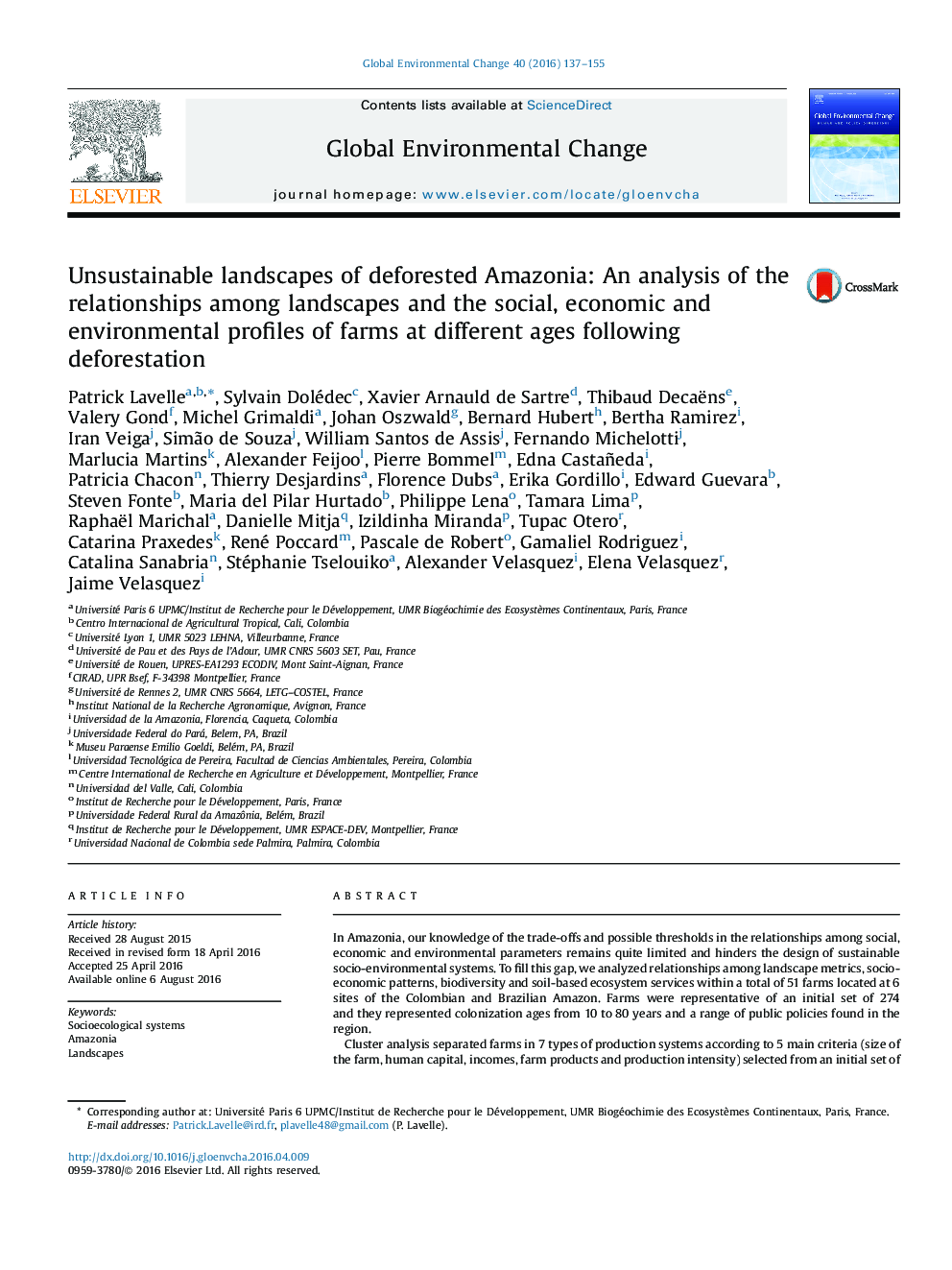| Article ID | Journal | Published Year | Pages | File Type |
|---|---|---|---|---|
| 7469260 | Global Environmental Change | 2016 | 19 Pages |
Abstract
An overall indicator of sustainability (Su) - that combines production efficiency (Ep), Sb, Bd and Es indices (ranging from 0.1-1.0) - decreases significantly with the landscape intensification (Li) with 18.7% variance directly explained by this relationship. Su was also significantly related to production systems (36.4% variance explained): while this indicator remained relatively stable with a value of 0.5 across the early and intermediate phases following deforestation, it dropped down considerably (0.2) for production systems based on cattle ranching on highly degraded pastures with less than 2% forest cover remaining. Restoration with sylvopastoral systems allowed some farms of this former group to increase sustainability to a value of 0.35 after less than 5 years. Agroforestry systems on sites deforested at the same time maintained values around 0.5, as they allowed the maximum production efficiencies and maintained relatively high values of the Biodiversity (Bd) and Ecosystem services (Es) indexes. This is evidence that beyond the general negative trade-off between human development and natural capital observed in Amazonia, agro ecological options to revert the trend are quite promising. A general methodological approach for the reconstruction of sustainable landscapes in farms of the deforested Amazonian region is proposed as a conclusion.
Keywords
Related Topics
Life Sciences
Environmental Science
Environmental Science (General)
Authors
Patrick Lavelle, Sylvain Dolédec, Xavier Arnauld de Sartre, Thibaud Decaëns, Valery Gond, Michel Grimaldi, Johan Oszwald, Bernard Hubert, Bertha Ramirez, Iran Veiga, Simão de Souza, William Santos de Assis, Fernando Michelotti, Marlucia Martins,
